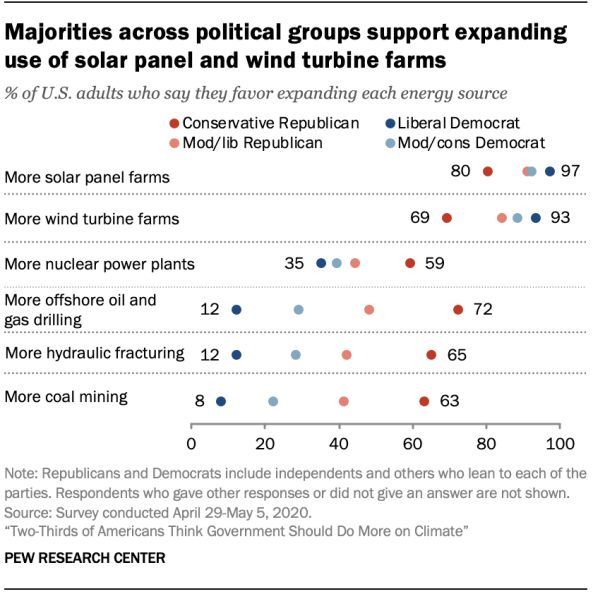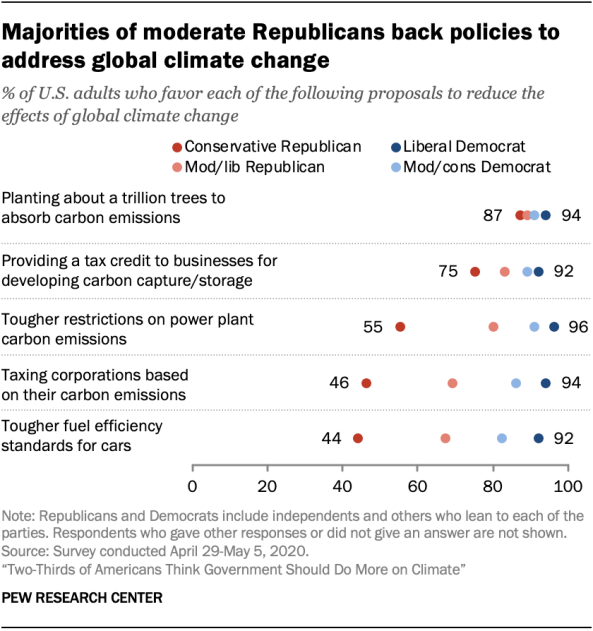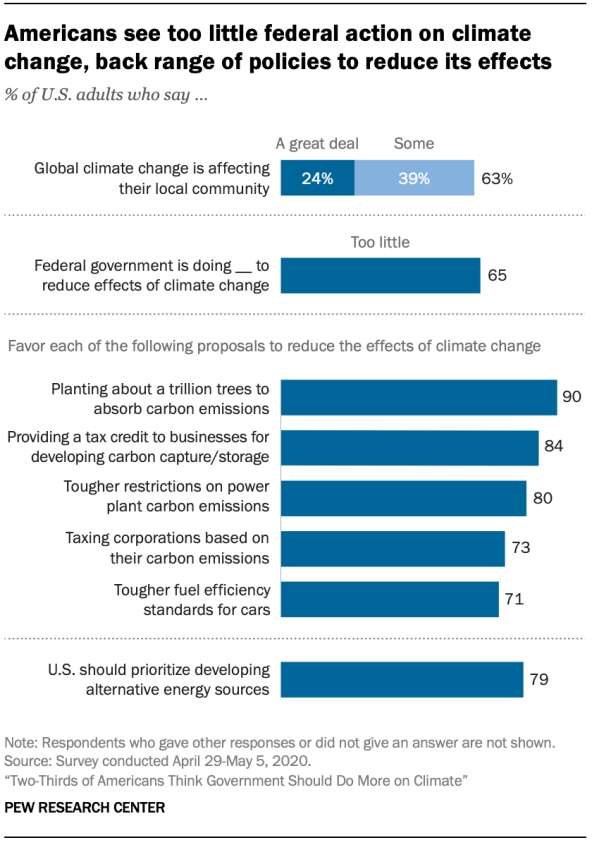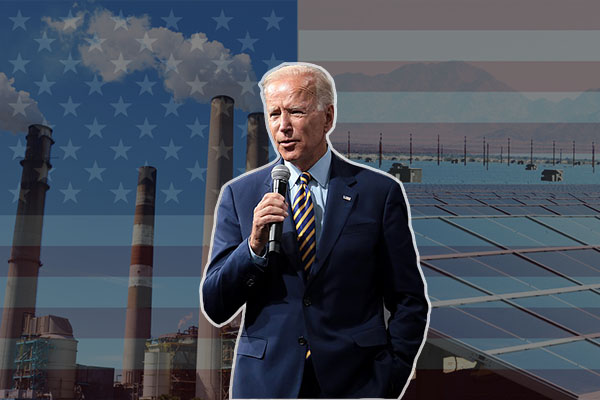Theme
President-elect Joseph Biden has pledged to re-join the Paris Agreement, raise America’s climate ambition, ‘build back better’ (and greener) and reverse recent climate legislative rollbacks. The question remains as to whether the Biden-Harris Administration will be able to deliver and what this means for the global climate regime.
Summary
As an early 5th anniversary present for the Paris Agreement, President-elect Joseph Biden announced the reversal of America’s climate retrenchment of the past four years. The US will, in all likelihood, request to re-join the Paris climate accord on day one of the new presidency,1 partially reclaiming its lost leadership status at international climate negotiations. Biden’s expected economic response to the COVID-19 pandemic is also expected to be green. In addition, the new Administration will try to halt or reverse the 159 climate regulation rollbacks that were put in place by the Trump Administration, according to Columbia’s Climate Deregulation Tracker,2 and increase its climate ambition domestically.
In order to succeed in returning to the international climate leaders’ table, Biden will have to present enhanced climate commitments in America’s second Nationally Determined Contributions (NDC) and meet such commitments domestically in a polarised country with a historical gridlock at a federal level on climate policy. So, while campaign trail promises are welcome news for the global provision of a stable climate, the question remains as to whether Biden’s actions will be enough for the US to regain its Obama-era climate leadership status and what that means for global climate action.
Analysis
Climate governance and the US: moving beyond Trump’s hoax
As climate talks opened at COP 22 in Marrakech in November 2016, Donald Trump was elected President of the US. In the months after the 2016 US presidential election it became increasingly clear that America would withdraw from the Paris Agreement. Donald Trump, who is a climate change denier who called anthropogenic climate change a hoax invented by the Chinese, affirmed that the Paris Agreement would harm the US economy, cost jobs and ‘allow far away countries’ to pollute.
On 1 June 2017 Trump made public his intention of withdrawing from the Paris Agreement as soon as possible, invoking article 28 of the agreement.3 However, he offered to renegotiate the Paris Agreement so as to craft a more favourable climate accord for the US, following his neo-Jacksonian and transactional (climate) logic.4 The international community responded by saying that concerted climate action was irreversible and indicated that the Paris Agreement would not be renegotiated at the request of any single Party.5
In spite of Trump’s best efforts, the US never lost all its climate-related diplomatic clout. US negotiators kept attending international climate negotiations after the withdrawal announcement and helped establish the implementation rules for the Paris Agreement (known as the Katowice Rulebook). However, two critical areas where the Trump Administration did harm the international climate regime were science and international climate finance. Trump’s weakening of climate science domestically and internationally entailed reducing funding and limiting the Environmental Protection Agency’s mandate. Trump also cut funding to the Intergovernmental Panel on Climate Change, enraging scientists in the US and around the world. He additionally backtracked on America’s international climate finance commitments. Only US$1 billion of the US$3 billion committed by Obama had been disbursed by the end of 2020. Failure to meet America’s international climate finance pledges has done little to close old wounds regarding whether developed countries were ever serious about their climate finance commitments.
Just as the international community forcefully responded to Trump’s withdrawal announcement, US non-state actors also answered with determination.6 On 5 June 2017 US civil society presented the initiative We are Still In, a network of 2,700 entities (states, companies, universities and citizens) with the objective of meeting the Paris Agreement, independently of Donald Trump’s decisions at the federal level. In addition, Michael Bloomberg and Jerry Brown launched America’s Pledge, an initiative that gathered the commitments of non-state actors who seek to uphold the Paris Agreement.
Additionally, the cost of renewables continued decreasing rapidly, making renewable power increasingly competitive vis-à-vis fossil fuels.7 The International Renewable Energy Agency (IRENA) recently estimated that over half of the new renewable power capacity added in 2019 globally (especially photovoltaic and onshore wind) was cheaper than that of the cheapest coal plants. IRENA also said that replacing 500GW of coal could cut power system costs by US$23 billon globally, reduce global CO2 emissions by 5% of 2019 figures and provide a much-needed investment stimulus of just under US$1 trillion. In the US, the Energy Information Administration (EIA) forecasted that renewables would be the fastest-growing source of power generation in 2020, adding over 23GW of wind and just under 13GW of utility-scale solar capacity (see Figure 1 below), despite Trump’s climate regulation rollbacks.

Additionally, bipartisan support for expanding wind and solar power could further empower states and the federal government to accelerate the low carbon transition during the Biden-Harris Administration.

The Biden-Harris Administration: towards green jobs
Looking forward, President-elect Biden has made climate change one of his presidency’s top priorities. His climate platform was touted as the most ambitious to date, with a circa US$2 trillion plan to push the low carbon transition. In the remainder of this section some of the key initiatives and climate-related announcements made by Joe Biden, as well as additional climate actions that could be implemented in the 2021-24 period, are analysed, from the international level to citizens.
(1) Reengaging in globally concerted climate action, repairing and rebuilding trust in the US as a reliable partner
Joseph Biden has announced the US will re-join the Paris Agreement on day one of his presidency and has appointed John Kerry, one of the key architects of the Paris Agreement, special climate envoy.8 The submission of the America’s second NDC will attest to the international climate ambition of the Biden Administration. The speed with which the NDC is presented, the ambition it contains (above the 26%-28% greenhouse gas emissions reduction target by 2025 versus 2005 in America’s first NDC) and whether the US sets feasible climate goals will be carefully scrutinised after its two climate defaults: America adopted but failed to ratify the Kyoto Protocol and has withdrawn (even if only temporarily) from the Paris Agreement.
For Biden to be able to satisfy his desire to regain a seat at the global climate action partnership table, enhanced diplomatic efforts will be required to help increase the climate ambition of other Parties to the Paris Agreement ahead of COP 26. A Biden-Xi agreement (re-editing the Obama-Xi agreement of 2014), perhaps with other willing partners, could reinforce America’s return to climate multilateralism. In order to fully engage with the international climate regime, Biden’s America will arguably be expected to trust science and show it, especially through funding the IPCC and heeding its recommendations. An additional must for America could entail honouring its international climate finance commitments, as the gap between pledged financial transfers and actual transfers has driven a wedge between developed and developing countries.
Within international institutions such as the G20 and the United Nations Framework Convention on Climate Change (UNFCCC), America could support (or bring forward) criteria to analyse the extent to which green recovery packages are Paris compatible. Recent analyses9 point out that, without a global green recovery, achieving the goals of the Paris Agreement might not be feasible and, hence, recovery packages might be the last chance we have to meet our globally agreed climate goals. The US could also use its trade firepower to embed the Paris Agreement in new and updated trade agreements, while observing World Trade Organisation (WTO) rules.
(2) Reinstating and reviewing domestic environmental protection, climate goals and policies
This could include, among others:10
- New or updated greenhouse gas emission goals, recommitting to reduce federal greenhouse (GHG) emissions in order to achieve a fully decarbonised power sector by 2035 and achieving net zero emissions by 2050 in accordance with Biden’s climate goals.11
- Updating energy efficiency standards.
- Restoring institutional mandates, in the Environmental Protection Agency and elsewhere, to address climate change.
- Repealing the Affordable Clean Energy Rule in favour of a modified Clean Power Plan that could hold up in court.
- Revoking regulations that limit the scope of Environmental Impact Assessments prior to building public infrastructure.
- Reversing the requirement of Cost-Benefit Analyses to exclude health co-benefits of climate action.
- Revising expedite approvals of fossil fuel projects.
- Reinforcing scientific independence and integrity as well as reinstating the Climate Science Advisory Committee that helped analyse climate change and informs states, local governments and the private sector of its impacts.
- Protecting federal lands, waters and National Monuments.
- Declaring a climate emergency.12 This declaration would be in line with the EU’s declaration in 2019 and with the more recent call at the Climate Ambition Summit 2020 by UN Secretary-General António Guterres for countries to declare a state of climate emergency until climate neutrality is reached.
- Update the economic instrument toolbox to address climate change. The use of carbon taxes to internalise the externality caused by greenhouse gas emissions is expected to be a difficult, though not necessarily impossible, advance under the Biden-Harris Administration. Environmental taxes have some predicament on both sides of the aisle and are supported by the majority of moderate Republicans, moderate and conservative Democrats and liberal Democrats, as shown in Figure 3 below.13

Given that climate change is historically a partisan issue in the US, the extent to which Biden’s climate commitments will materialise is, at this stage, uncertain. Even after winning the two Senate votes in Georgia, approving ambitious and Paris-aligned legislation is likely to be difficult for the Biden-Harris Administration.
(3) Embracing a green recovery plan
It has been argued that one avenue for greening America’s development model, which could muster bipartisan support, could be through the post COVID-19 economic stimulus package. Additional stimulus under a Biden-Harris Administration14 could be used to further advance renewables and accelerate America’s low carbon transition while increasing green jobs, banking on the better climate performance and high long-term economic multipliers of certain green investments.15 Biden’s ‘9 key elements for a clean energy revolution’, ‘Build back better: Joe Biden’s Jobs and Economic Recovery Plans for Working Families’ and ‘Climate: 10 million clean energy jobs’ initiatives signal the President’s intent to seize the opportunities brought about by a green economic recovery.
As for the extent to which citizens support a green recovery, in a recent survey by IPSOS 57% of interviewees in the US said that economic recovery should prioritise climate change. However, in a different question included in the survey, 47% of interviewees said that the government should support economic recovery first, even at the expense of the environment. Joe Biden will therefore have to juggle these two potentially conflicting views if his ‘green’ economic recovery plan is to garner widespread public acceptance.
(4) Empowering states to increase their climate ambition
This would imply, among other actions:
- Facilitating a race to the top by reversing, for instance, Trump’s revocation of the ability of states such as California to set stricter emission standards for vehicles, among others.
- Encouraging states to join initiatives such as the US Climate Alliance. The members of the alliance commit to implement policies to achieve the climate goals enshrined in America’s first NDC, track and report their GHG emission data under the stocktaking exercises of the Paris Agreement, and advance a low carbon transition (see Figure 4 below).
Figure 4. US State Greenhouse Gas Emission targets
| State | Description |
|---|---|
| Washington | Washington has statutory targets to reduce GHG emissions by 45% by 2030, 70% by 2040 and 95% by 2050, all compared to 1990 levels, which were enacted in 2020. The targets also aim for net-zero GHG emissions by 2050 |
| Oregon | Oregon has executive and statutory targets of reducing GHG emissions 45% below 1990 levels by 2035 and 80% below 1990 levels by 2050, which were set in 2020. Additionally, the state has statutory targets of reducing emissions 10% below 1990 levels by 2020 and 75% below 1990 levels by 2050, which were enacted in 2007. |
| California | California has a target of reaching net zero carbon dioxide emissions by 2045, which was set in 2018. The state also set a target in 2005 to reduce GHG emissions 80% below 1990 levels by 2050. In 2006, the state enacted a statutory target to reduce GHG emissions to 1990 levels by 2020 and in 2016, it set a statutory target to reduce GHG emissions 40% below 1990 levels by 2030. |
| Nevada | Nevada enacted statutory targets in 2019 to reduce GHG emissions 28% by 2025 and 45% by 2030 compared to 2005 levels, and reach zero or near-zero by 2050. |
| Montana | Montana set a target in 2019 to achieve economy-wide GHG neutrality at a date to be determined. In 2020, the state announced its target to reach economy-wide GHG neutrality between 2045-50. |
| Colorado | Colorado has statutory targets to reduce GHG emissions 26% by 2025, 50% by 2030, and 90% by 2050, all compared to 2005 levels, which were set in 2019. |
| New Mexico | New Mexico has a target to reduce GHG emissions 45% below 2005 levels by 2030, which was enacted in 2019. |
| Minnesota | Minnesota has statutory targets to reduce GHG emissions 30% below 2005 levels by 2025 and 80% below 2005 levels by 2050, which were enacted in 2007. |
| Michigan | Michigan has a target to achieve economy-wide carbon neutrality by no later than 2050 and to maintain net negative GHG emissions thereafter, which was set in 2020. In 2019, the state also set a target of reducing GHG emissions 26%-28% below 2005 levels by 2025. This target is consistent with the state’s commitment as a member of the US Climate Alliance. |
| Louisiana | Louisiana has targets to reduce net GHG emissions 26%-28% by 2025 and 40%-50% by 2030, compared to 2005 levels, which were set in 2020. The targets also aim for net-zero GHG emissions by 2050. |
| Maine | Maine has a target of achieving net-zero GHG emissions by 2050, and statutory targets to reduce GHG emissions 45% below 1990 levels by 2030 and 80% below 1990 levels by 2050. All three targets were enacted in 2019. |
| New Hampshire | New Hampshire has targets to reduce GHG emissions 20% below 1990 levels by 2025 and 80% below 1990 levels by 2050, which were enacted in 2009. |
| Massachusetts | Massachusetts has a target to reduce GHG emissions 85% below 1990 levels and reach net-zero GHG emissions by 2050, which was set in 2020. The state also has statutory targets to reduce GHG emissions 25% below 1990 levels by 2020 and 80% below 1990 levels by 2050, which were enacted in 2008. |
| New Jersey | New Jersey has targets to reduce GHG emissions to 1990 levels by 2020 and 80% below 2006 levels by 2050, which were enacted in 2007 |
| Pennsylvania> | Pennsylvania has targets to reduce GHG emissions 26% below 2005 levels by 2025 and 80% below 2005 levels by 2050, which were enacted in 2019. |
| Delaware | Delaware has a target to reduce GHG emissions 30% below 2008 levels by 2030, which was enacted in 2014. |
| Maryland | Maryland has a statutory target to reduce GHG emissions 40% below 2006 levels by 2030, which was enacted in 2016. |
| Virginia | Virginia has a statutory target to achieve net-zero GHG emissions across all sectors by 2045, which was enacted in 2020. |
| North Carolina | North Carolina has a target to reduce GHG emissions 40% below 2005 levels by 2025, which was enacted in 2018. |
| Hawaii | Hawaii’s climate commitments include providing 100% of its power from renewable sources and achieving carbon neutrality by 2045. |
| Illinois | Illinois has committed to reduce its GHG emissions by 26%-28% below 2005 levels by 2025, achieve a 25% RES target in 2025. |
| Wisconsin | Wisconsin’s goal is to achieve 100% of carbon-free power by 2050. |
| Puerto Rico | Puerto Rico will reduce its GHG emissions by 50% within the next five years. As for its RES targets in the power sector, these include: 40% by 2025, 60% by 2040 and 100% by 2050. Coal phase-out will materialise by 2028. |
Sources: Center for Climate and Energy Solutions (2020), US State Greenhouse Gas Emission targets16 and US Climate Alliance (2020), Inventory of Climate and Clean Energy Policies.
- Enhancing awareness about climate change. Climate change is increasingly perceived as a major threat to the US and yet almost two-thirds of respondents interviewed by Pew in 2020 believe too little is being done by the government to address it (see Figure 5 below). The widespread perception of climate change as a threat and that of limited government action to address it could support greater climate ambition by the Biden-Harris Administration. Perceptions, however, differ significantly across the Democrat/Republican line. An overwhelming majority of Democrats or Democrat-leaning voters (88%) and less than a third of Republicans or Republican-leaning voters (31%) say that climate change is a major threat to the country (up from 61% of Democrats and 25% of Republicans in 2009). This asymmetric perception of climate change as a threat between Democrats and Republicans could be factored in when developing awareness raising and engagement actions.

One way of enhancing climate awareness and action could be to include more climate-related topics in national curriculums. Academic research finds that both national curriculums and government resources on climate change across a number of countries and regions, including the US, have not informed about (or promoted) actions that would have the highest impact on reducing citizens’ carbon footprint. This implies there is scope for increasing citizens’ awareness and engagement on this issue. The Biden campaign, however, is said to have been moot on climate-related education.
Will the US regain climate leadership under a Biden-Harris Administration?
The short answer to this question is yes, but (arguably) only partially. Legally, no Party can prevent any other Party from re-joining the Paris Agreement. Once the US re-joins the Paris accord it will sit at the COP negotiating table with an impressive track-record of effectively uploading its preferences in the international climate regime, especially as regards pledge and review mechanisms and market-based instruments (MBIs).17
In the event that Biden’s climate pledges make it to America’s second NDC, more ambitious climate goals from the world’s second-largest GHG emitter18 will in all likelihood be welcome by the international climate community. These could not come at a better time, if we are to heed the warnings of climate science. Backing and financing the Intergovernmental Panel on Climate Change, as well as disbursing pending international climate finance withheld in the past four years, could help rebuild (part of) the US climate leadership that has been squandered by the Trump Administration.
International climate negotiators will undoubtedly welcome the US back into the Paris climate accord. For climate policy and international relations scholars, however, the US desire to return to globally coordinated climate action and quest for climate leadership could come with caveats and warnings. First, the historical climate policy gridlock at the federal level is likely to preclude overly optimistic assessments of the impact of the change in the US presidency. Secondly, if a Republican were to become America’s 47th President in 2024, the withdrawal process of the Paris Agreement could recommence, and, domestically, a climate deregulatory spree could be triggered again. Third, international reliance on the US as a reliable climate partner has diminished. While the US is a key player in the global climate regime, a robust approach to climate action via more distributed climate leadership among ambitious Parties is arguably here to stay, if only to try to limit the impacts of political cycles on climate ambition.
Conclusions
The election of Joseph Biden as the 46th US President has been welcomed with a sigh of relief from international climate negotiators. The US is expected to re-join the Paris Agreement a month after Joe Biden is sworn in as President. The world’s second-largest GHG emitter will be back in the global climate regime and willing to work with partners to bridge the gap between climate goals and current actions.
Under a Biden-Harris Administration, significant diplomatic efforts can be expected in rebuilding trust in the US as a reliable partner in the multilateral climate regime. In order to showcase that America is back in the global climate stage a climate summit will be organised in the first 100 days of the Biden presidency which will convene the leaders of major economies to raise climate ambition ahead of COP 26. Joseph Biden has announced that the US will increase its climate commitments and will aim to reach net-zero emissions by 2050.
Domestically, the Biden-Harris Administration is expected to seek to reverse Trump’s climate-related deregulatory initiatives, engage with non-Party stakeholders to raise ambition and support a ‘green’ COVID-19 recovery package. Biden’s green recovery agenda and view of climate action as a source of growth and jobs can go a long way in sending signals to other Parties regarding the opportunities of the low carbon transition.
However, despite the announcements, Joe Biden is faced with a complex environment in which to make his climate policies thrive. This environment includes a polarised country with partisan views of climate change, federal gridlock on climate policies and having to allocate significant time, resources and political capital to revert climate legislative rollbacks brought about by the Trump Administration.
The US track-record within the international climate regime, with two prior climate defaults and historical limits to climate action at the federal level, should be a reminder of the need to keep working on a distributed climate leadership model at a global level in order to move the climate action needle forward in earnest.
Lara Lázaro-Touza
Senior Anayst, Energy & Climate Programme, Elcano Royal Institute. Lecturer, Cardenal Cisneros University College (affiliated to Madrid’s Complutense University) and IE School of Global and Public Affairs | @lazarotouza
1According to article 21 of the Paris Agreement the US will re-join the climate accord 30 days after it deposits its instrument of ratification, acceptance, approval or accession (again).
2 M. Burger & D.J. Metzger (2020), ‘Climate regulation in a Biden Administration’, Sabine Center for Climate Change Law, Columbia Law School.
3 White House (2017), ‘Statement by President Trump on the Paris Climate Accord’, 1/VI/2017, https://www.whitehouse.gov/briefings-statements/statement-president-trump-paris-climate-accord/ (last accessed 2/IX/2019).
4 W.R. Mead (2000), ‘The Jacksonian tradition and American Foreign Policy’, The National Interest, Winter 1999/2000, nr 58, pp. 5-29.
5 UNFCCC (2017), ‘Statement on the US decision to withdraw from Paris Agreement’.
6 L. Kemp (2017), ‘US-proofing the Paris Climate Agreement’, Climate Policy, vol. 17, nº 1, pp. 86-101.
7 IRENA (2020), ‘Renewable power generation costs in 2019’, IRENA.
8 John Kerry will also have a seat at the National Security Council. Climate change has been touted as a threat to national security in the US prior to 2017 and, while this is arguably a valid consideration, a Biden Administration could consider moving the climate security narrative beyond securitisation towards human security (aligned with the EU’s current view of the climate security nexus) and even ecological security. See L. Lázaro Touza & A. Gómez de Ágreda (2020), ‘Integrating climate change action into EU security policy’, in E. Conde, V. Zhakin & M. Scopelliti, The Routledge Handbook of European Security and Law, Routledge, Oxford, pp. 239-265.
9 W. Obergassel, W. Hermwille & S. Oberthür (2020), ‘Harnessing international climate governance to drive a sustainable recovery from the COVID-19 pandemic’, Climate Policy.
10 M. Burger & D.J. Metzger (2020), ‘Climate regulation in a Biden Administration’, Sabine Center for Climate Change Law. Columbia Law School; C. Greider & J. Gerow (2020), ‘Climate recommendations for a new Democratic President and a new Congress: a compilation’, Sabine Center for Climate Change Law, Columbia Law School; and M.B. Gerrard & J.D. Dernbach (2019), ‘Legal pathways to deep decarbonization in the United States’, Environmental Law Institute.
11 Joe Biden and Kamala Harris have said they will focus their climate action in the next four years on: decarbonising infrastructure, creating 1 million jobs in the car industry (including building electric vehicle charging stations), providing cities with a population of over 100,000 with carbon-free public transport, achieving a net-zero power sector, building 1.5 million sustainable homes, upgrading 4 million houses and weatherising 2 million homes, supporting innovation (including the development of batteries, hydrogen and advanced nuclear energy) and creating over 250,000 jobs in the climate-smart agricultural sector and in nature restoration and conservation initiatives.
12 M. Burger & D.J. Metzger (2020), ‘Climate regulation in a Biden Administration’, Sabine Center for Climate Change Law, Columbia Law School.
13 Note that, in principle, taxes bring static and dynamic efficiency that can help reduce mitigation costs and spur innovation. Should the carbon tax be pushed forward, a Just Transition Strategy for vulnerable consumers could be considered in order to limit the impacts of increased taxation.
14 Note that the US stimulus package under the Trump Administration has been evaluated negatively in the Greenness of Stimulus Index report by Vivid Economics (2020), which analysed the US$ 2.98 trillion spending package as of October 2020.
15 C. Hepburn, B. O’Callaghan, N. Stern, J. Stiglitz & D. Zenghelis (2020), ‘Will COVID-19 fiscal recovery packages accelerate or retard progress on climate change?’, Oxford Review of Economic Policy, vol. 36, Supplement 1, S359–S381, https://doi.org/10.1093/oxrep/graa015.
16 Note that the states in bold lettering in Figure 4 are members of the US Climate Alliance.
17 Market and non-market instruments are included in article 6 of the Paris Agreement, still pending closure, it is to be hoped at COP 26 in 2021.
18 Note that the US emitted 13.92% of global GHG in 2018. See M. Crippa, G. Oreggioni, D. Guizzardi, M. Muntean, E. Schaaf, E. Lo Vullo, E. Solazzo, F. Monforti-Ferrario, J.G.J. Olivier & E. Vignati (2019), ‘Fossil CO2 and GHG emissions of all world countries’, 2019 Report, EUR 29849 EN, Publications Office of the European Union, Luxembourg, ISBN 978-92-76-11100-9, doi:10.2760/687800, JRC117610.



